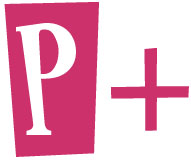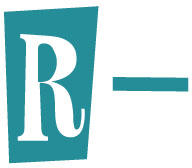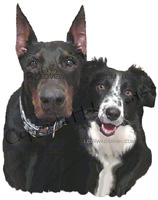When I was first learning how to train dogs, it was back in the 80’s. My first classes were with Dick Koehler. Through his tutelage, I learned how to train dogs using a method of force. If we are looking at quadrants, that would be positive punishment (which really isn’t positive at all) and negative reinforcement.
 Positive punishment was what we did to dogs when we yanked up on the choke chain when a dog didn’t obey the command, sit, for example. When the dog didn’t obey the command down, we were taught to yank down on the chain, thus bringing the dog to the ground. Those are examples of positive punishment. We were adding (positive or +) pain (punishment) to the dog which decreased the likelihood that next time he’d “disobey.” P+. Punish a behavior, and the result is it happens less.
Positive punishment was what we did to dogs when we yanked up on the choke chain when a dog didn’t obey the command, sit, for example. When the dog didn’t obey the command down, we were taught to yank down on the chain, thus bringing the dog to the ground. Those are examples of positive punishment. We were adding (positive or +) pain (punishment) to the dog which decreased the likelihood that next time he’d “disobey.” P+. Punish a behavior, and the result is it happens less.
 Negative reinforcement was also in the Koehler method toolbox. That means we remove an aversive/pain which gives the dog relief. When a behavior is reinforced, the result is that it happens more. Through the Koehler method, I learned how to pinch my dog’s ear until he picked up a dumbbell. That is called the force retrieve. The pressure and pain on the ear is removed (negative or -) thus giving the dog relief (reinforcement). R- Reinforce a behavior, and the result is it happens more or is maintained.
Negative reinforcement was also in the Koehler method toolbox. That means we remove an aversive/pain which gives the dog relief. When a behavior is reinforced, the result is that it happens more. Through the Koehler method, I learned how to pinch my dog’s ear until he picked up a dumbbell. That is called the force retrieve. The pressure and pain on the ear is removed (negative or -) thus giving the dog relief (reinforcement). R- Reinforce a behavior, and the result is it happens more or is maintained.
Back then, that was the way dog training was done. Though I often wonder how William Koehler, Dick’s father and Disney’s chief animal trainer for over 20 years, trained animals for Disney movies. Neither P+ nor R- methods are efficient for trick training. Through the classes I took with the Koehlers, treats were not part of their method of training. People who used treats were called “cookie trainers” and that was not a term of endearment. Who knew “cookie” was a four-letter word?
I stopped training for competition and sport for a little over a decade from the early 90’s into the early 2000’s. When I returned, the world of training had turned upside down. Cookie trainers were happening and no longer did you have to hide in shame if you thought about using treats for training. Humane training arrived from scientific research to dog training classes. Crossing over from the thought system of one method to the other took a little work on my part, but it felt right. Even the vocabulary is different. I still struggle with saying Housetraining instead of Housebreaking. Cues are used, not commands. Changing the language I use, though, is important and befitting to this new method.
 So I am now a cookie trainer. I use treats and clickers no matter if I’m training sit, down, fetch, or working on resource guarding, dog-dog aggression cases, or alert barking gone overboard. The latter was what propelled me to the phone book back in the 80’s. Upon comparing the two methods to train, the Positive Reinforcement/Negative Punishment method is much more effective, not to mention my conscience never bothers me.
So I am now a cookie trainer. I use treats and clickers no matter if I’m training sit, down, fetch, or working on resource guarding, dog-dog aggression cases, or alert barking gone overboard. The latter was what propelled me to the phone book back in the 80’s. Upon comparing the two methods to train, the Positive Reinforcement/Negative Punishment method is much more effective, not to mention my conscience never bothers me.
Tomorrow I’ll discuss the R+ and P- used in dog training with treats.
By Helen Verte
Certified Pet Dog Trainer-Knowledge Assessed, Certified Trick Dog Instructor
The Cookie Trainer




